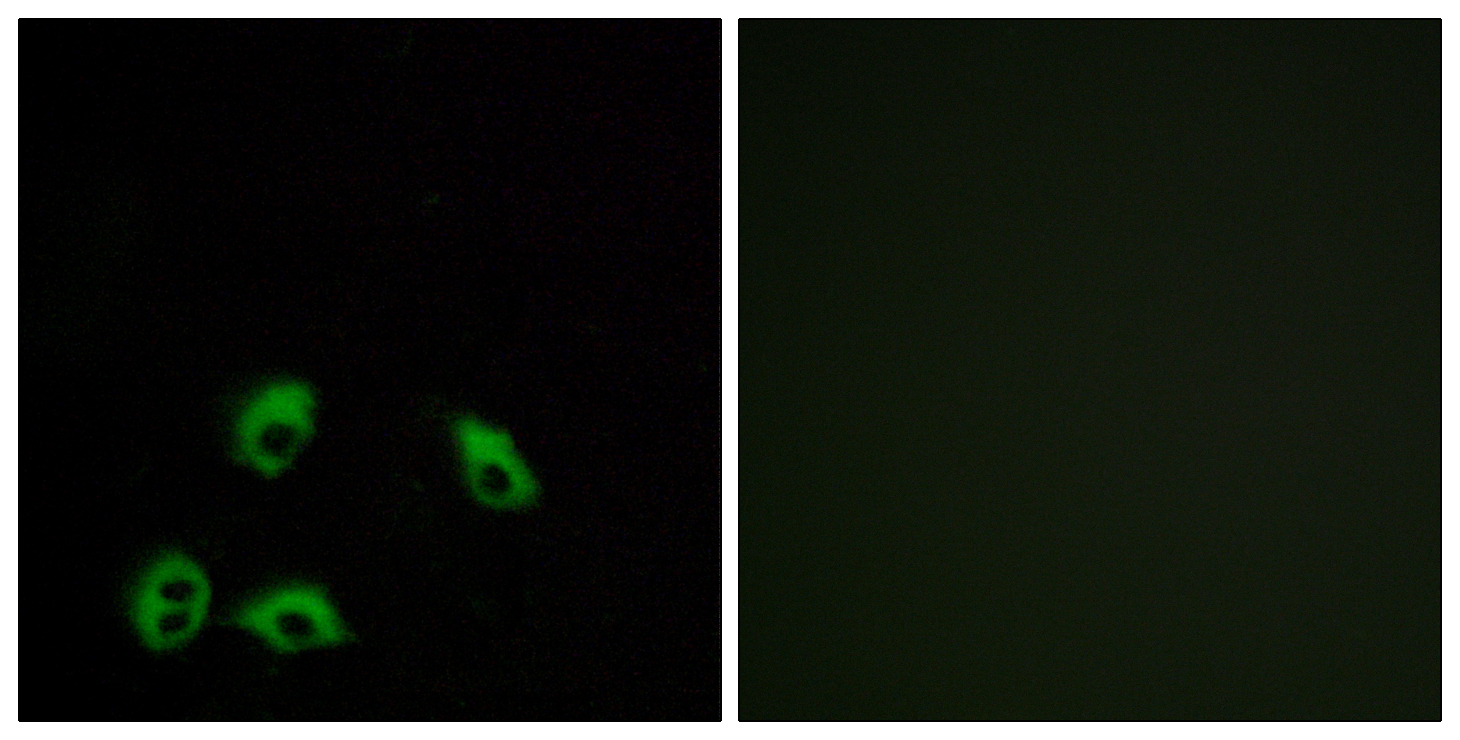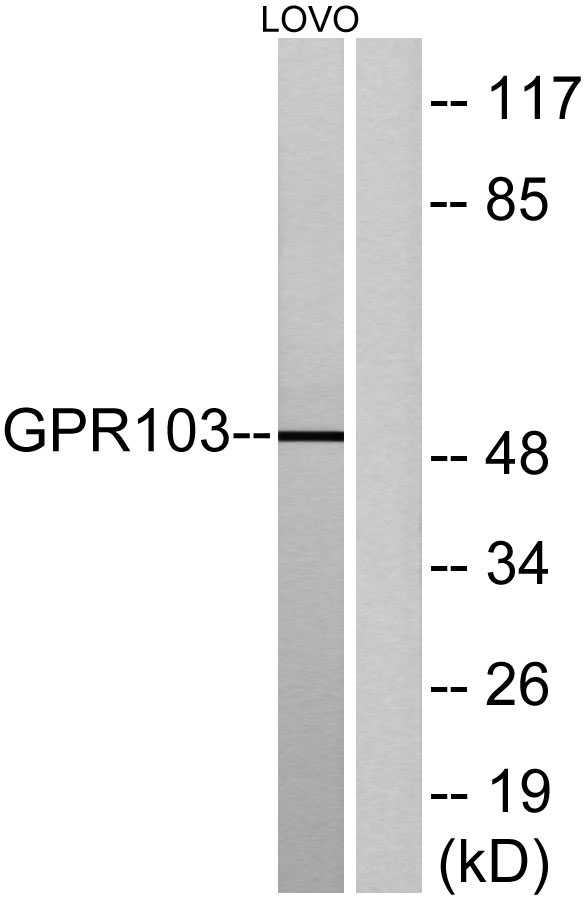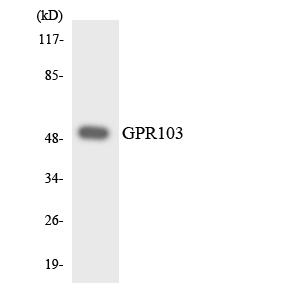GPR103 Polyclonal Antibody
- Catalog No.:YT1951
- Applications:WB;IF;ELISA
- Reactivity:Human;Mouse;Rat
- Target:
- GPR103
- Fields:
- >>Neuroactive ligand-receptor interaction
- Gene Name:
- QRFPR
- Protein Name:
- Pyroglutamylated RFamide peptide receptor
- Human Gene Id:
- 84109
- Human Swiss Prot No:
- Q96P65
- Mouse Gene Id:
- 229214
- Mouse Swiss Prot No:
- P83861
- Rat Gene Id:
- 310327
- Rat Swiss Prot No:
- P83858
- Immunogen:
- The antiserum was produced against synthesized peptide derived from human GPR103. AA range:271-320
- Specificity:
- GPR103 Polyclonal Antibody detects endogenous levels of GPR103 protein.
- Formulation:
- Liquid in PBS containing 50% glycerol, 0.5% BSA and 0.02% sodium azide.
- Source:
- Polyclonal, Rabbit,IgG
- Dilution:
- WB 1:500 - 1:2000. IF 1:200 - 1:1000. ELISA: 1:10000. Not yet tested in other applications.
- Purification:
- The antibody was affinity-purified from rabbit antiserum by affinity-chromatography using epitope-specific immunogen.
- Concentration:
- 1 mg/ml
- Storage Stability:
- -15°C to -25°C/1 year(Do not lower than -25°C)
- Other Name:
- QRFPR;GPR103;Pyroglutamylated RFamide peptide receptor;AQ27;G-protein coupled receptor 103;Orexigenic neuropeptide QRFP receptor;SP9155
- Observed Band(KD):
- 49kD
- Background:
- function:Receptor for the orexigenic neuropeptide QRFP. The activity of this receptor is mediated by G proteins that modulate adenylate cyclase activity and intracellular calcium levels.,similarity:Belongs to the G-protein coupled receptor 1 family.,tissue specificity:Expressed widely in the brain with high levels in the hypothalamus, trigeminal ganglia and vestibular neurons, and moderate levels in the amygdala, cortex, pituitary, hippocampus, thalamus, caudate nucleus and medulla oblongata. In peripheral tissues, expressed at high levels in the retina and at moderate levels in the heart, kidney, testis and thyroid.,
- Function:
- function:Receptor for the orexigenic neuropeptide QRFP. The activity of this receptor is mediated by G proteins that modulate adenylate cyclase activity and intracellular calcium levels.,similarity:Belongs to the G-protein coupled receptor 1 family.,tissue specificity:Expressed widely in the brain with high levels in the hypothalamus, trigeminal ganglia and vestibular neurons, and moderate levels in the amygdala, cortex, pituitary, hippocampus, thalamus, caudate nucleus and medulla oblongata. In peripheral tissues, expressed at high levels in the retina and at moderate levels in the heart, kidney, testis and thyroid.,
- Subcellular Location:
- Cell membrane; Multi-pass membrane protein.
- Expression:
- Expressed widely in the brain with high levels in the hypothalamus, trigeminal ganglia and vestibular neurons, and moderate levels in the amygdala, cortex, pituitary, hippocampus, thalamus, caudate nucleus and medulla oblongata. In peripheral tissues, expressed at high levels in the retina and at moderate levels in the heart, kidney, testis and thyroid.
- June 19-2018
- WESTERN IMMUNOBLOTTING PROTOCOL
- June 19-2018
- IMMUNOHISTOCHEMISTRY-PARAFFIN PROTOCOL
- June 19-2018
- IMMUNOFLUORESCENCE PROTOCOL
- September 08-2020
- FLOW-CYTOMEYRT-PROTOCOL
- May 20-2022
- Cell-Based ELISA│解您多样本WB检测之困扰
- July 13-2018
- CELL-BASED-ELISA-PROTOCOL-FOR-ACETYL-PROTEIN
- July 13-2018
- CELL-BASED-ELISA-PROTOCOL-FOR-PHOSPHO-PROTEIN
- July 13-2018
- Antibody-FAQs
- Products Images

- Immunofluorescence analysis of MCF7 cells, using GPR103 Antibody. The picture on the right is blocked with the synthesized peptide.

- Western blot analysis of lysates from LOVO cells, using GPR103 Antibody. The lane on the right is blocked with the synthesized peptide.

- Western blot analysis of the lysates from Jurkat cells using GPR103 antibody.



